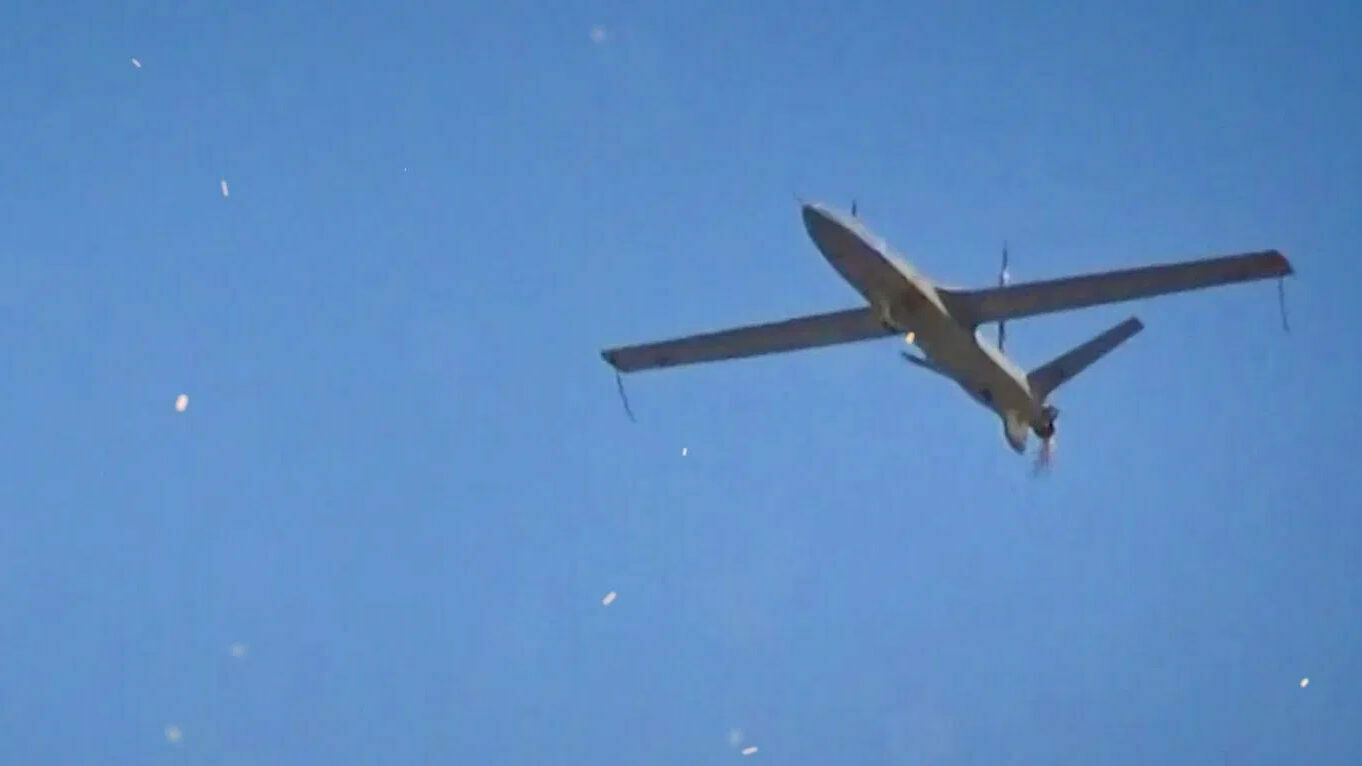More drone and rocket attacks targeted United States bases in Iraq and Syria as Israel escalated its war on the Palestinian Gaza Strip.
The Islamic Resistance in Iraq, a coalition of Iranian-backed Shia armed factions, announced on October 27 that it had attacked U.S. troops at Ayn al-Assad Air Base in the western Iraqi province of al-Anbar with a suicide drone.
Later on the same day, the U.S. Green Village base at al-Omar oil fields in the eastern Syria governorate of Deir Ezzor was reportedly targeted with a salvo of ten rockets. A fire erupted at the base after the attack. However, no casualties have been reported, so far.
A series of explosions were reported at around the same time at Kharab Al-Jir Airstrip in the northeastern Syria governorate of al-Hasakah.
On October 28, two suicide drones struck the U.S. al-Tanf garrison in southeastern Syria. The Islamic Resistance in Iraq claimed responsibility for the attack.
The last wave of attacks on U.S. bases in Syria and Iraq came after the Pentagon announced strikes on two facilities linked to Iran’s Islamic Revolutionary Guard Corps near the town of al-Bukamal in Deir Ezzor. The strikes, which were ordered by President Joe Biden, were carried out in response to previous attacks that wounded some 21 U.S. service members and were meant to deter Iranian-backed forces.
Earlier this week, the Pentagon announced the deployment of 900 troops and at least a dozen air defense systems in the Middle East to improve security for U.S. troops as Israel steps up operations against the Hamas Movement in Gaza.
Heavy Israeli bombardment on Palestinians in the Strip was what started the attacks on U.S. bases in Iraq and Syria in the first place.
Despite growing threats to its forces in the Middle East, the U.S. continues to provide unconditional political and military support to Israel’s war efforts. This will likely lead to more escalation in the region. Attacks on U.S. troops in the region will likely intensify as the Israeli military develops its ground operations in Gaza.







murikan reetards wonder why they are under attack
nah they’re morally bankrupt pirates and raiders. the pillaging viking barbarian hunter-gatherer gene still present in their dna. they’re wondering what took them so long
iz dumbmark pillager of old
the us can not handle many war fronts at the same time. some may see this as an opportunity to achieve liberation.
i am getting tired of this “iran- backed”, is this supposed to remind us of how bad it is if we compare it with us led coalition?
every thinking person knows that the anti iran crowd is running wash. d.c . now. the proxy war in ukraine run by us “businessmen” and corporate interests masquerading as the us congress has failed so now another extremist geopolitical cabal has stepped in making iran the main nation to destroy. does mike pompeo ring a bell?
true wtb, distract, deflect, decieve and so forth. standard anglo-american behavior along with their perverted fake roman handlers.
the big danger with us policy now target iran using us military to attack “iranian sites supporting hamas and hezbollah” in syria, is the potential for conflict between us carrier aircraft and russian aircraft in the region. remember the many us violations of “deconfliction zones” recently?
it seems that world war 3 will erupt from middle east.
neither the american or the zionist entity report their casualties truthfully. in war against an enemy with limited isr and reconnaissance resources this makes some tactical sense because it limits your enemies ability to evaluate the success of his efforts. in the war against russia this is pointless because russia doesn’t need american or ukr to publish reports to evaluate their operations. .
usa retarded armies in syria will not come home, their bases are now a prison, same of gaza, awaiting death